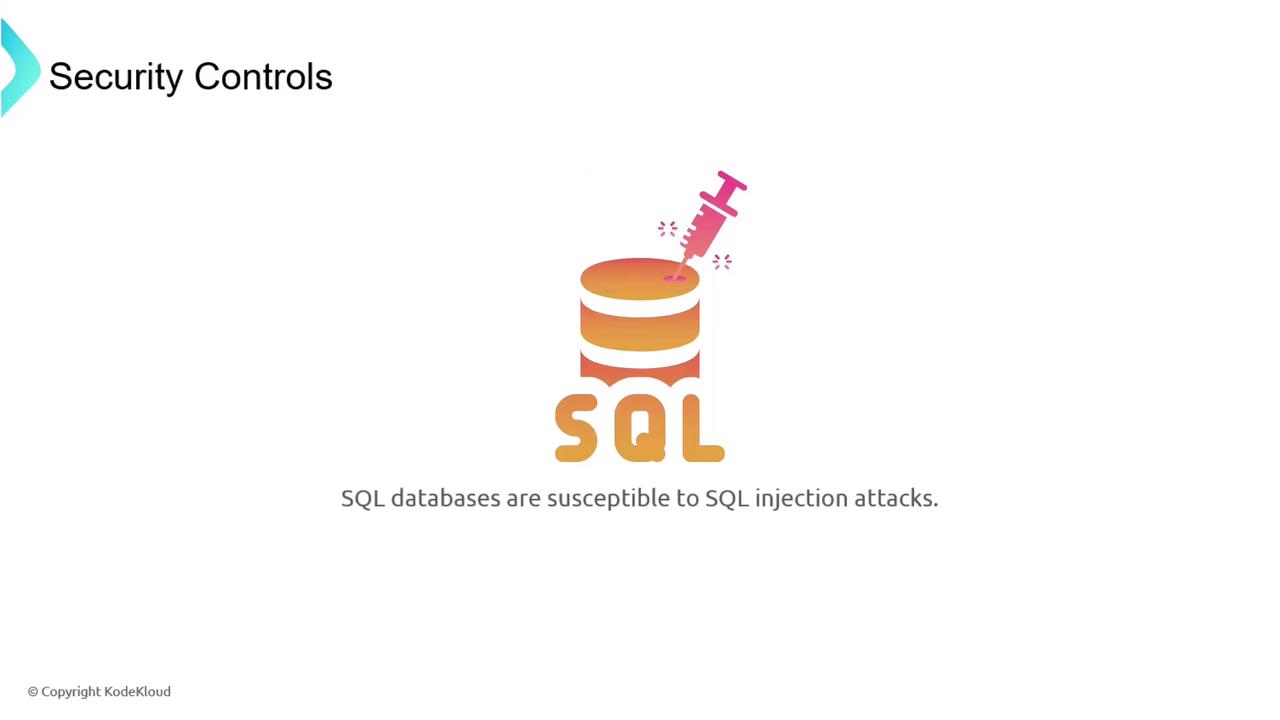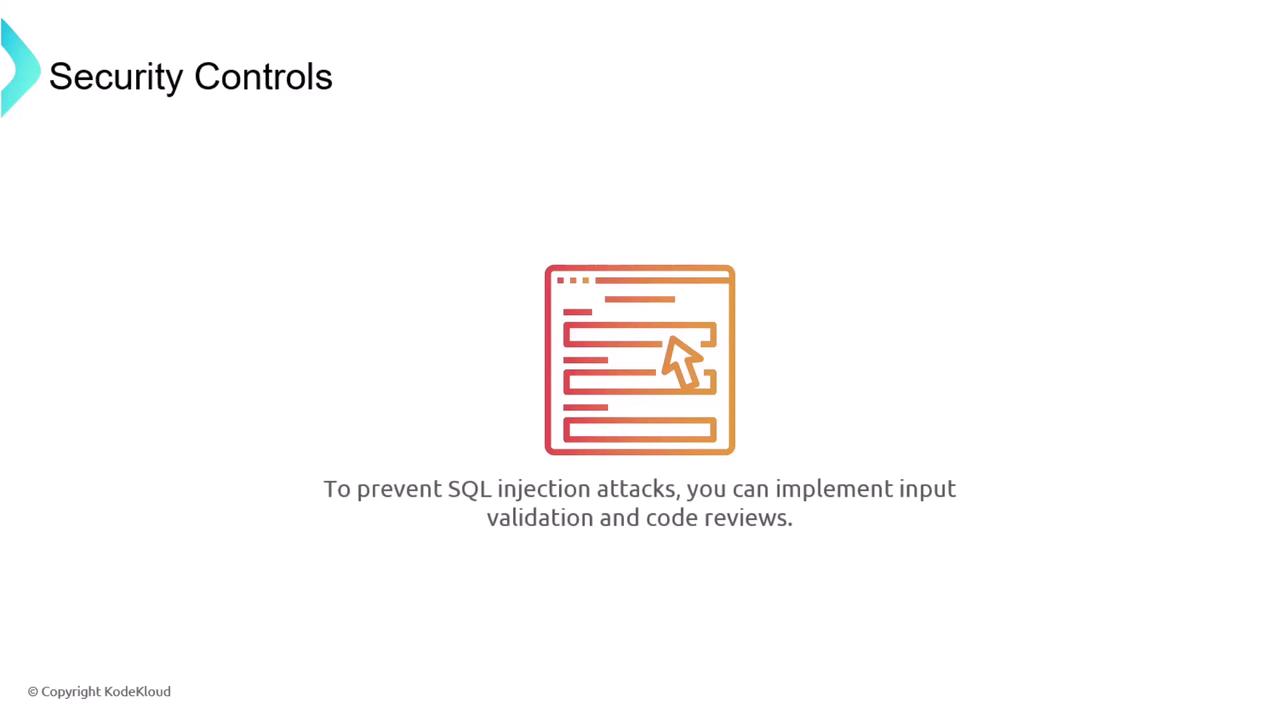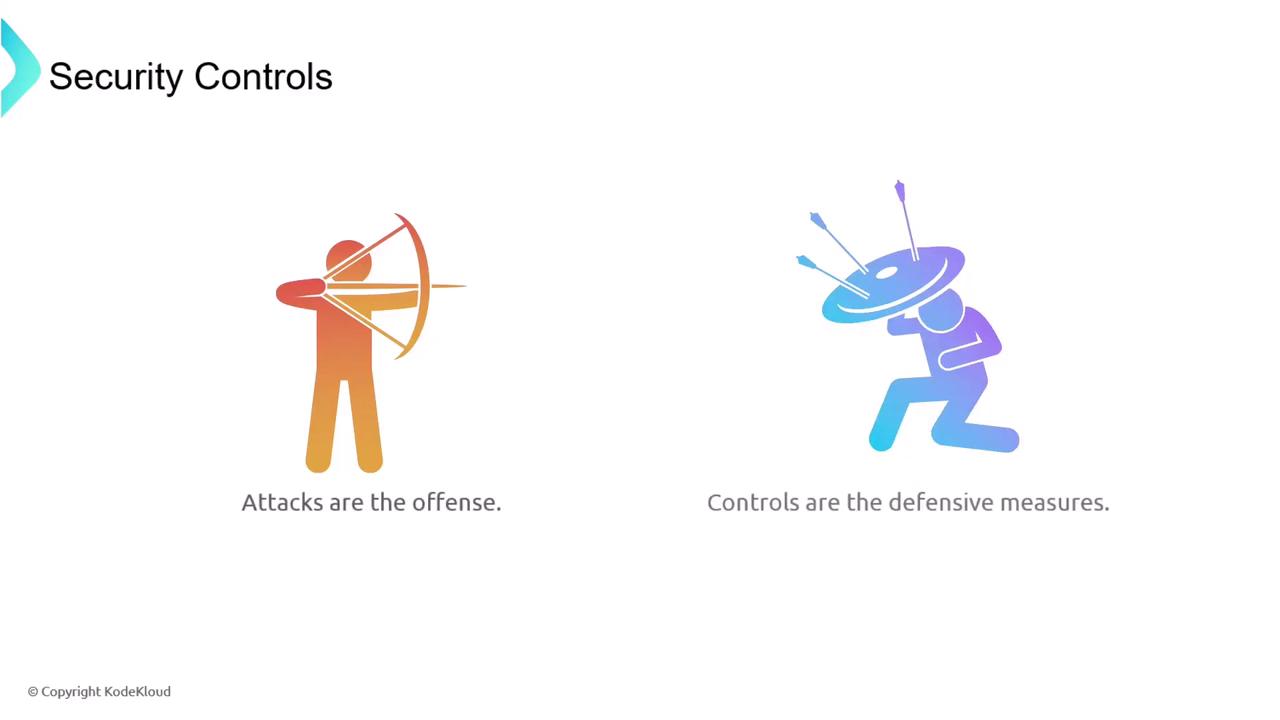CompTIA Security+ Certification
Controls and Security Concepts
Security Controls
Welcome to Section 2 of the KodeKloud Security Plus Certification Exam Preparation Course. In this lesson, we delve into general security concepts that serve as the foundation for more advanced topics.
In this section, you will learn how to:
- Understand fundamental security concepts.
- Explore the definition of security controls and differentiate between various types.
- Review key security principles such as the Confidentiality, Integrity, and Availability (CIA) triad, Zero Trust, and physical security measures.
- Examine the Change Management process in detail.
What Are Security Controls?
A security control is an action or countermeasure implemented to mitigate specific security threats. As cyberattacks become more complex, understanding these controls is crucial to safeguarding your systems. Below, we discuss examples to help illustrate how these controls function in practice.
Mitigating Malware and Computer Viruses
Malware and computer viruses are among the most common attack vectors. To protect against these threats, many organizations deploy anti-malware and anti-virus detection software.

The diagram above clearly illustrates a security control designed to counteract attacks involving malware and computer viruses.
Protecting Against SQL Injection Attacks
Consider another scenario: running a SQL database as part of an application. SQL databases are particularly vulnerable to SQL injection attacks, during which hackers attempt to manipulate your database by injecting malicious SQL commands.

To defend against SQL injection:
- Input Validation: Ensure all data received by your application is checked for potentially harmful input.
- Code Reviews: Regularly perform thorough code reviews to identify and remediate vulnerabilities.

Effective Defense Strategy
Implementing robust input validation and comprehensive code reviews can significantly reduce the risk of SQL injection attacks.
The Defensive Role of Security Controls
While malicious attacks represent offensive tactics, security controls act as your organization's defensive measures, preventing or mitigating these attacks.

By understanding and implementing these security controls, you strengthen your system's resilience against threats.
For further reading on related topics, consider exploring:
This comprehensive overview of security controls is an essential step in fortifying your mastery of cybersecurity fundamentals. Enjoy your learning journey in this course!
Watch Video
Watch video content